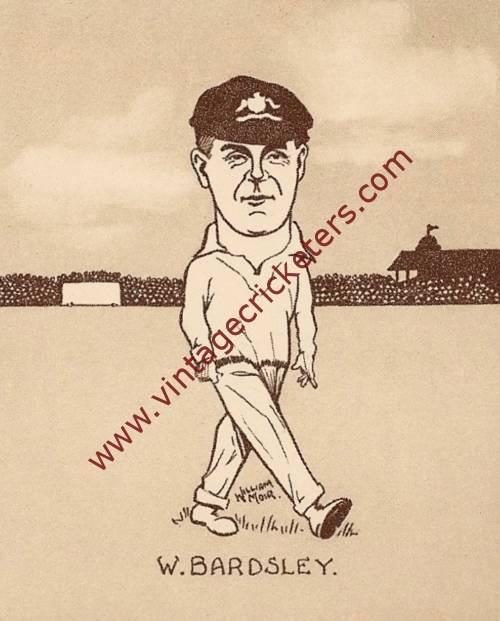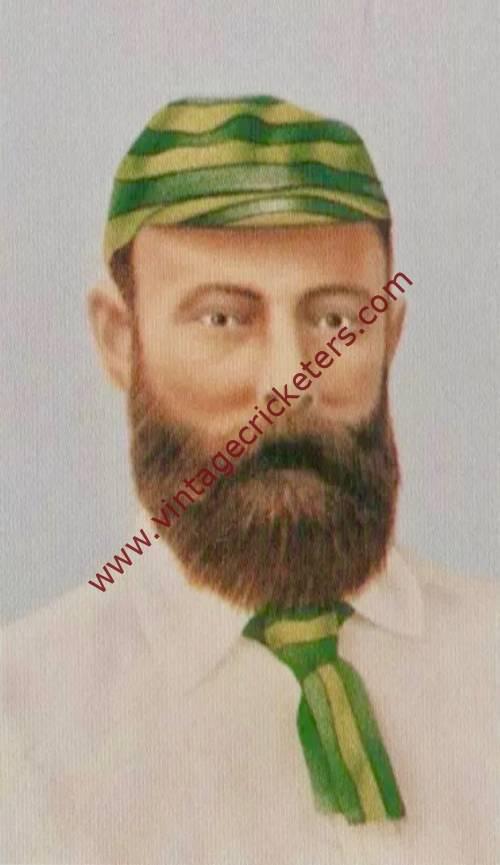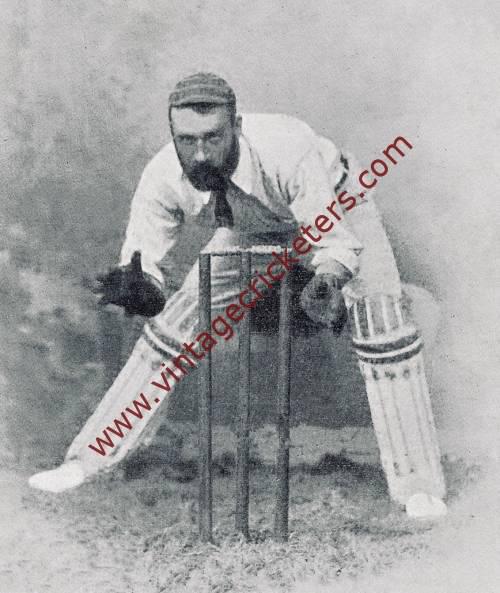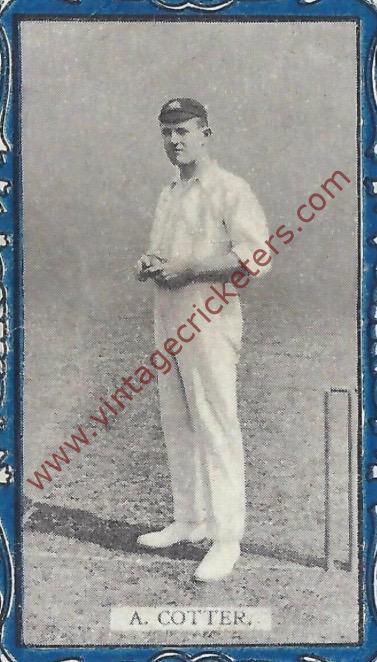Please choose your photo size from the drop down menu below.
If you wish your photo to be framed please select Yes.
Note: 16″x 20″not available in a frame.
Images can also be added to accessories. To order please follow these links
£8.95 – £49.95
Please choose your photo size from the drop down menu below.
If you wish your photo to be framed please select Yes.
Note: 16″x 20″not available in a frame.
Images can also be added to accessories. To order please follow these links
The maximum number of views of this element is reached.
Please contact the webmaster to enable unlimited views.
Carlton, Melbourne, Australia born right-handed batsman Harry Graham, described as “a splendid hitter with any amount of dash and vigour”, was known affectionately as “The Little Dasher”, and joined the South Melbourne Cricket Club on leaving school and later moved to the Melbourne Cricket Club in the 1894-1895 season and, finally, to the Carlton Cricket Club. Having made his first class debut playing for Victoria in 1892-93, Graham scored a century on his Test debut at Lord’s in July 1893, making 107 when coming in at 75-5, and Graham was very successful all through the tour and headed the averages in all matches. He then scored 105 in his first Test on home soil, at Sydney in February 1895. He was only the third player to score a century on Test debut, and the first player to score a century in the second innings on Test debut.
After he retired from first class cricket in Australia, in 1903 Graham accepted the post of coach at Otago Boys’ High School in Dunedin. He also played several times for Otago in first class matches from 1903-04 to 1906-07, but without reproducing the brilliance of his Australian form.
After his death aged only 40 in February 1911 after struggles with alcoholism and mental illness, Punch wrote: “Fame is death to some men. Poor Harry Graham, who died far away from the scene of his meteoric triumphs, was a case in point. When the “Little Dasher” blossomed out into an international player eighteen years ago, he was the cricket public’s idol. Had anybody suggested a testimonial money would have flown in a rich stream to the treasurer. But the trips to England took him off his feet, and finally left him high and dry in neglected obscurity. Never, possibly, did a man so quickly feel the stress and strain of all-the-year cricket. Before he became king of the bat he was a champion goal-kicker. After his tours he could hardly kick a ball forty yards. Peace to his ashes. He did many a man a good turn.”
The Bendigo Advertiser wrote: “[Graham was] one of the most brilliant batsmen and fieldsmen Australia has ever produced. He first became famous with the bat in 1892-93, when playing for Victoria. He was included in the Australian team which visited England in 1893, and was a great success. He headed the batting averages for all matches, one of his best efforts being 107 runs against All-England at Lord’s. He was a terror on fast bowling. He was a resolute batsman, a distinct characteristic being the alteration of his style to suit varying conditions of wickets. Graham was regarded as the best wet wicket batsman who ever played for Australia, whilst his equal as an outfield has rarely been seen.”
In 114 first class matches he scored 5,050 runs at an average of 26.32, with 7 centuries and 24 half centuries, including two centuries in Tests and another two against South Australia. His average in his 6 Test matches for Australia was 30.10. He also took 6 first class wickets as an occasional legbreak bowler at 43 apiece with a best return of 4-39, and took 85 catches in first class play.
Recruited from the Marylebone Football Club, Graham was also a leading Australian Rules footballer, playing for Melbourne Football Club, firstly in the Victorian Football Association for a number of years, where he was runner-up in the goal kicking in 1892 with 42 goals. He made a comeback in 1900, playing two games for the Melbourne First XVIII in the new Victorian Football League: the first against Essendon, on 30th June 1900 (round 9), in which he played well and scored one goal, and the second against Carlton, on 7th July 1900 (round 10), in which he scored two goals.
Vintage Cricketers was founded in July 2019. There may be more photographs of this cricketer in the Vintage Cricketers library, which are due to be loaded in due course. In the meantime, please send a message to us using the contact form at the bottom left of this page and we can arrange to prepare and publish all images of this cricketer if you have a particular interest in him.
| Weight | N/A |
|---|



